Abstract
The anatomical characteristics of the upper respiratory tract of various experimental animals and man are described. There are a number of differences and similarities macroscopically and microscopically between the species. Perhaps one of the most obvious examples of anatomical differences is in the structure of the turbinates. Some of the differences could affect deposition and clearance of particles in the nasal cavities. Effects of compounds in the nasal cavity, larynx, and trachea can differ depending on the cellular composition of the mucosa.
Full text
PDF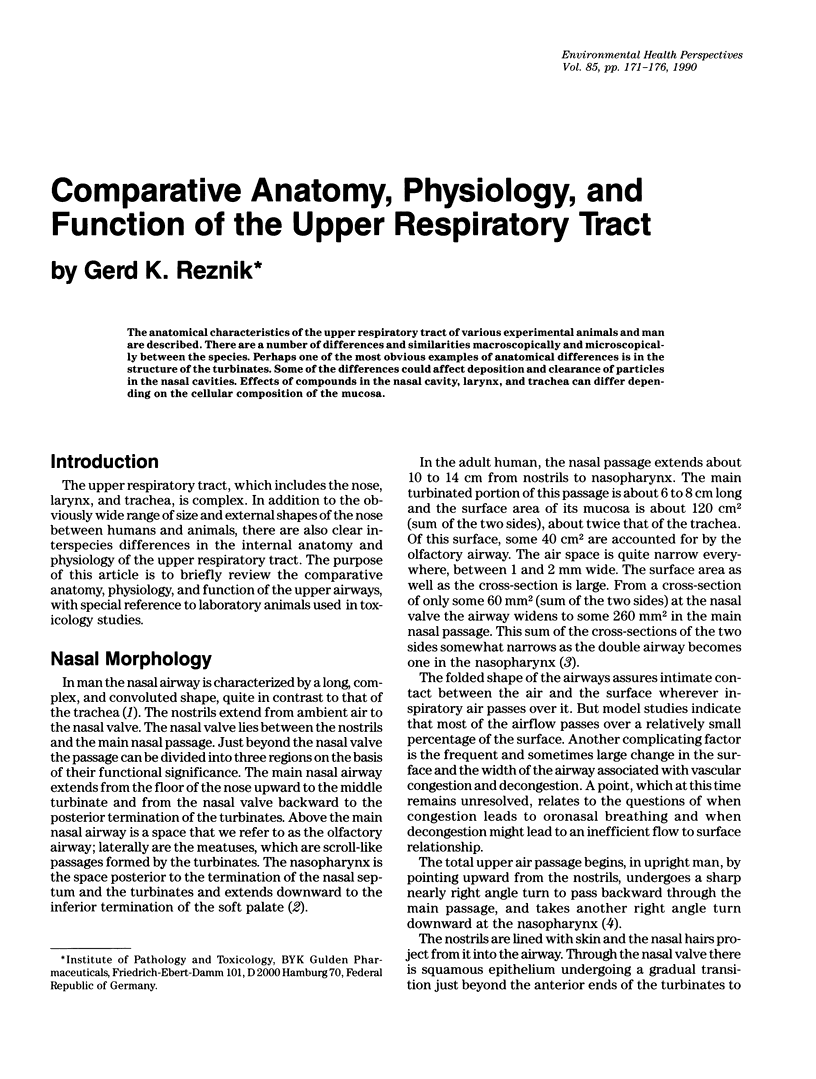
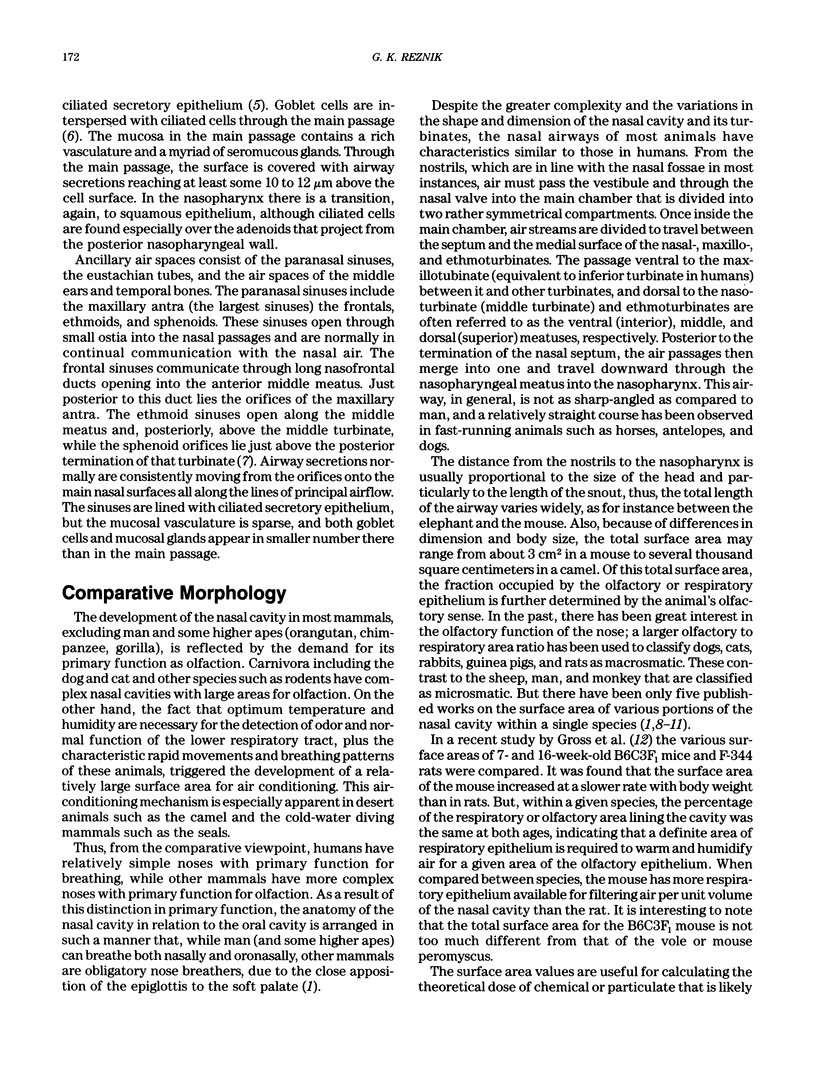
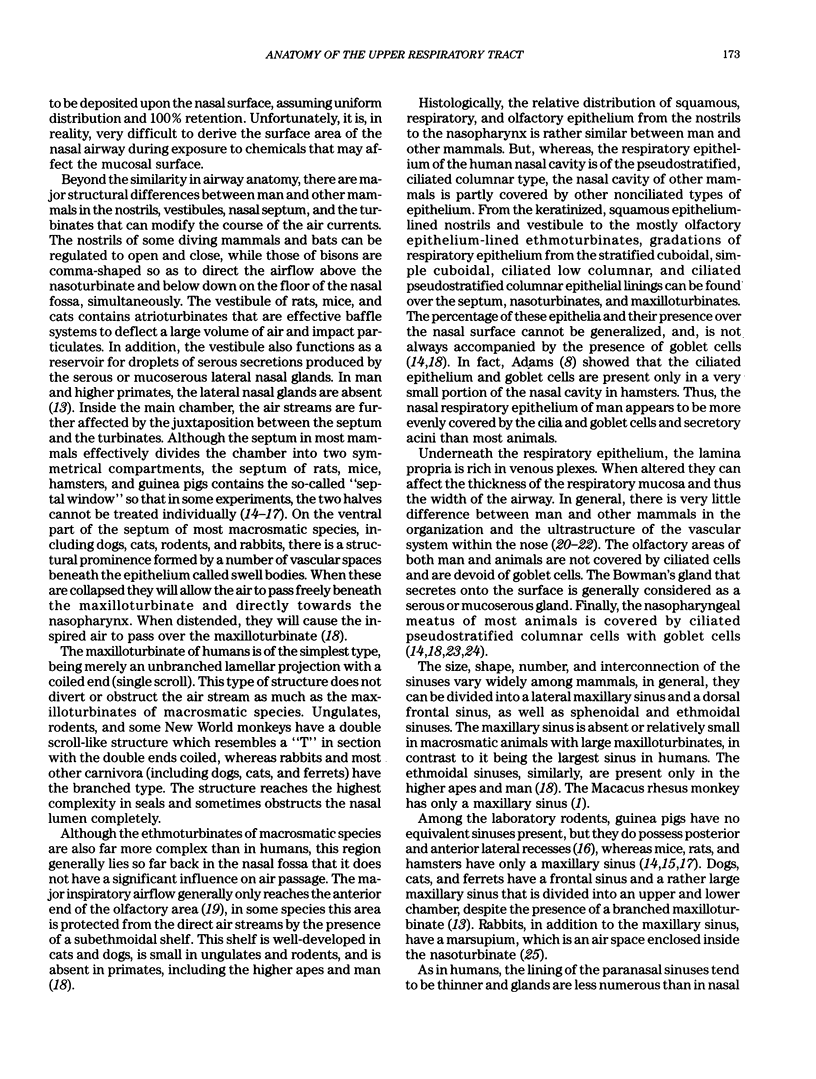
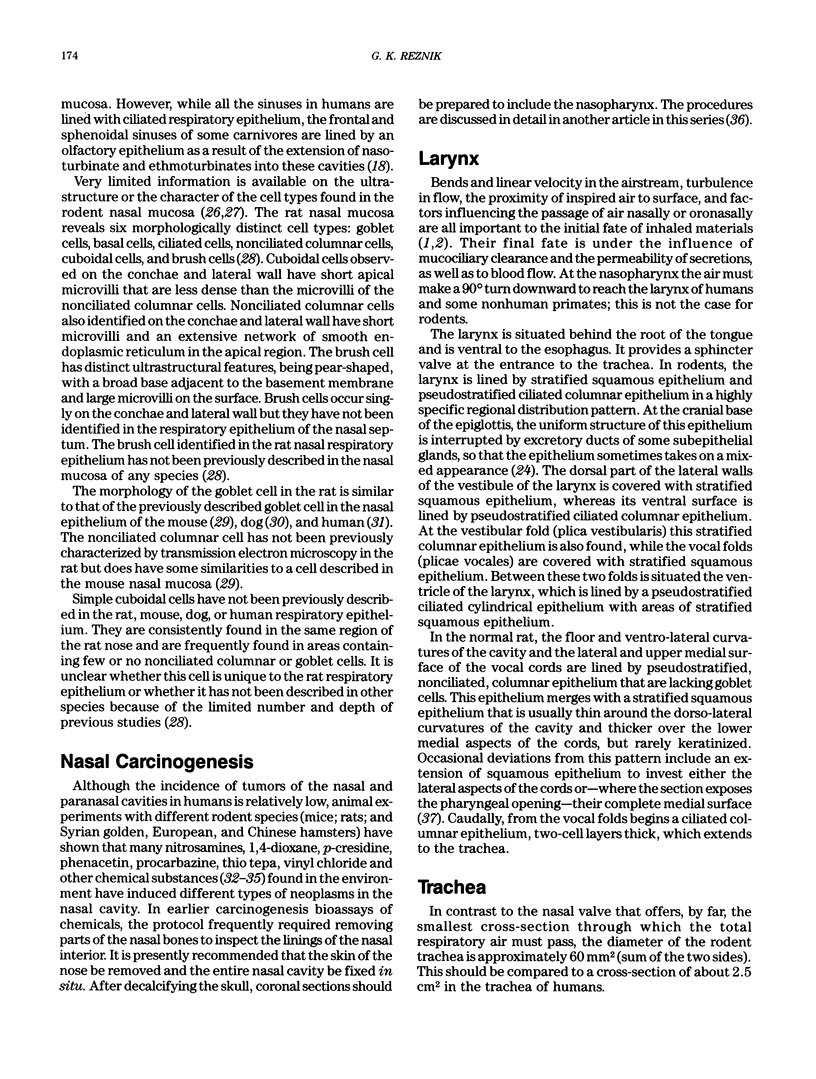
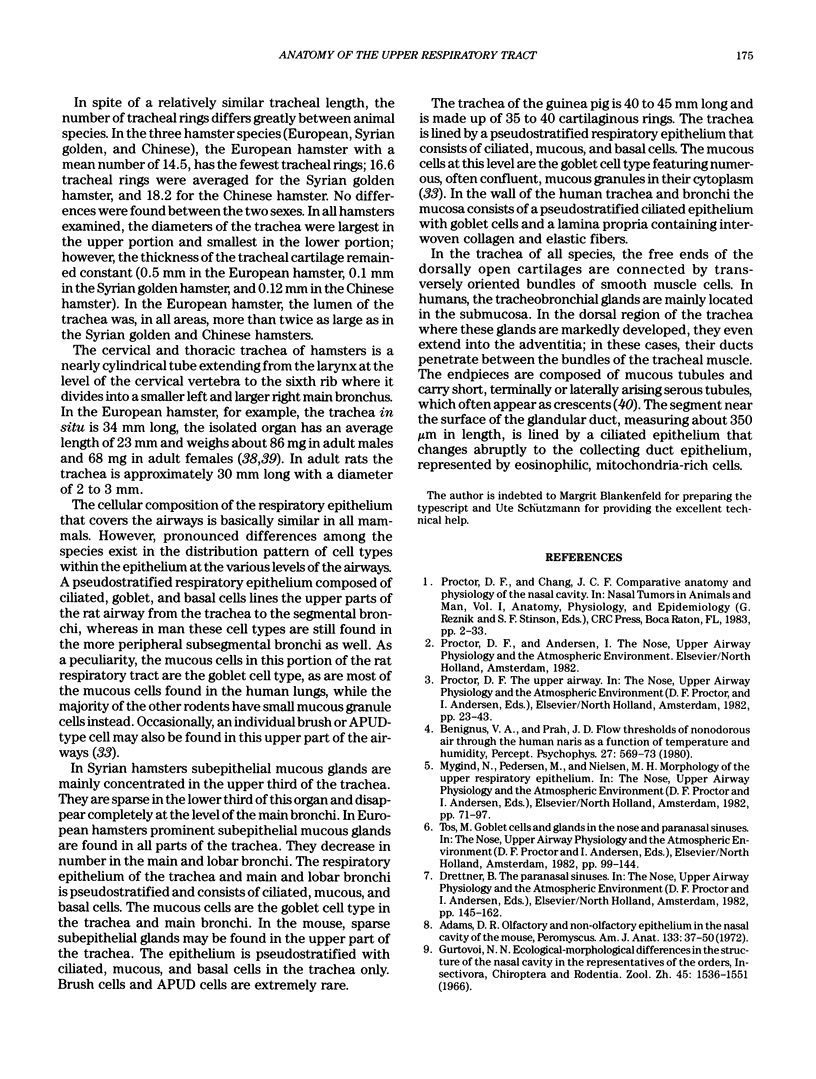
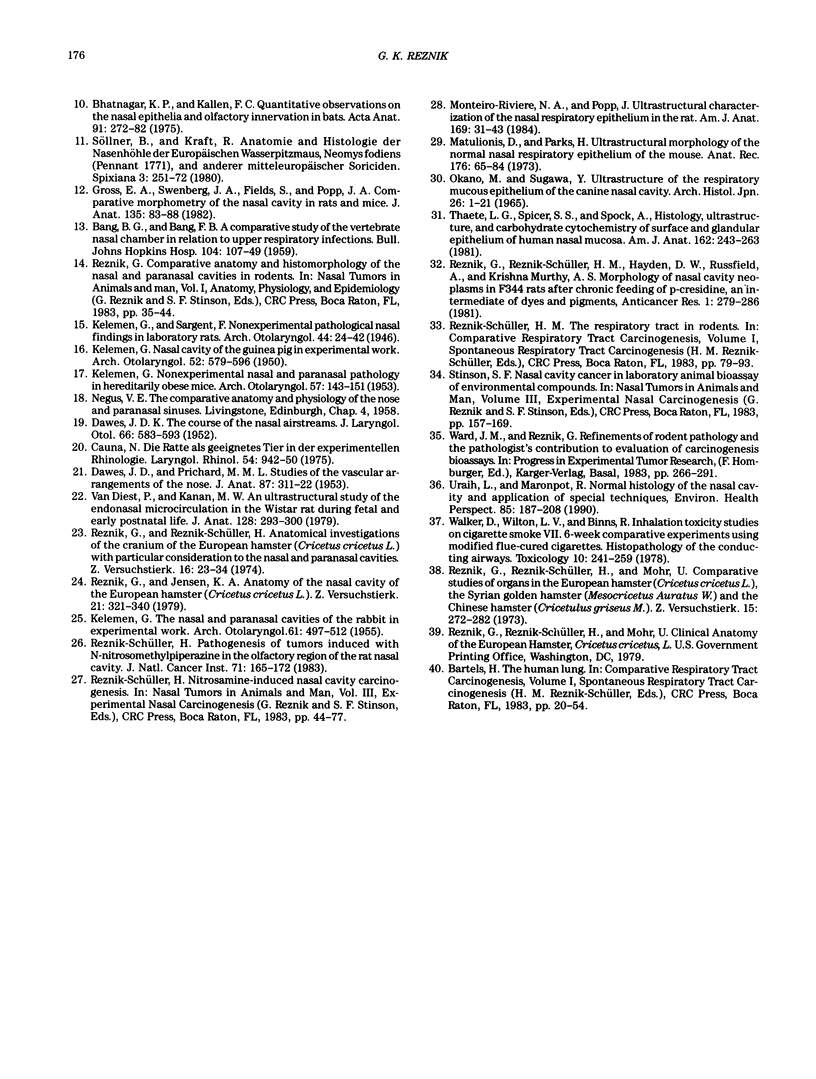
Selected References
These references are in PubMed. This may not be the complete list of references from this article.
- Adams D. R. Olfactory and non-olfactory epithelia in the nasal cavity of the mouse, Peromyscus. Am J Anat. 1972 Jan;133(1):37–49. doi: 10.1002/aja.1001330104. [DOI] [PubMed] [Google Scholar]
- BANG B. G., BANG F. B. A comparative study of the vertebrate nasal chamber in relation to upper respiratory infections. Bull Johns Hopkins Hosp. 1959 Mar;104(3):107–149. [PubMed] [Google Scholar]
- Benignus V. A., Prah J. D. Flow thresholds of nonodorous air through the human naris as a function of temperature and humidity. Percept Psychophys. 1980 Jun;27(6):569–573. doi: 10.3758/bf03198687. [DOI] [PubMed] [Google Scholar]
- Bhatnagar K. P., Kallen F. C. Quantitative observations on the nasal epithelia and olfactory innervation in bats. Suggested design mechanisms for the olfactory bulb. Acta Anat (Basel) 1975;91(2):272–282. doi: 10.1159/000144389. [DOI] [PubMed] [Google Scholar]
- Cauna N. Die Ratte als geeignetes Tier in der experimentellen Rhinologie Eine elektronenmikroskopische Untersuchung der Nasenschleimhaut und ihrer Nervenversorgung. Laryngol Rhinol Otol (Stuttg) 1975 Dec;54(12):942–950. [PubMed] [Google Scholar]
- DAWES J. D. K. The course of the nasal airstreams. J Laryngol Otol. 1952 Dec;66(12):583–593. doi: 10.1017/s0022215100048143. [DOI] [PubMed] [Google Scholar]
- DAWES J. D., PRICHARD M. M. Studies of the vascular arrangements of the nose. J Anat. 1953 Jul;87(3):311–322. [PMC free article] [PubMed] [Google Scholar]
- Gross E. A., Swenberg J. A., Fields S., Popp J. A. Comparative morphometry of the nasal cavity in rats and mice. J Anat. 1982 Aug;135(Pt 1):83–88. [PMC free article] [PubMed] [Google Scholar]
- KELEMEN G. Nasal cavity of the guinea pig in experimental work. AMA Arch Otolaryngol. 1950 Oct;52(4):579–596. doi: 10.1001/archotol.1950.00700030603006. [DOI] [PubMed] [Google Scholar]
- KELEMEN G. Nonexperimental nasal and paranasal pathology in hereditarily obese mice. AMA Arch Otolaryngol. 1953 Feb;57(2):143–151. doi: 10.1001/archotol.1953.00710030162003. [DOI] [PubMed] [Google Scholar]
- KELEMEN G. The nasal and paranasal cavities of the rabbit in experimental work. AMA Arch Otolaryngol. 1955 May;61(5):497–512. doi: 10.1001/archotol.1955.00720020514001. [DOI] [PubMed] [Google Scholar]
- Monteiro-Riviere N. A., Popp J. A. Ultrastructural characterization of the nasal respiratory epithelium in the rat. Am J Anat. 1984 Jan;169(1):31–43. doi: 10.1002/aja.1001690103. [DOI] [PubMed] [Google Scholar]
- Okano M., Sugawa Y. [Ultrastructure of the respiratory mucous epithelium of the canine nasal cavity]. Arch Histol Jpn. 1965 Oct;26(1):1–21. doi: 10.1679/aohc1950.26.1. [DOI] [PubMed] [Google Scholar]
- Reznik-Schüller H. M. Pathogenesis of tumors induced with N-nitrosomethylpiperazine in the olfactory region of the rat nasal cavity. J Natl Cancer Inst. 1983 Jul;71(1):165–172. [PubMed] [Google Scholar]
- Reznik G., Jensen K. A. Anatomy of the nasal cavity of the European hamster (Cricetus cricetus). Z Versuchstierkd. 1979;21(6):321–340. [PubMed] [Google Scholar]
- Reznik G., Reznik-Schüller H. M., Hayden D. W., Russfield A., Murthy A. S. Morphology of nasal cavity neoplasms in F344 rats after chronic feeding of p-cresidine, and intermediate of dyes and pigments. Anticancer Res. 1981;1(5):279–286. [PubMed] [Google Scholar]
- Reznik G., Reznik-Schüller H. Anatomical investigations of the cranium of the European hamster (Cricetus cricetus L.) with particular consideration to the nasal and paranasal cavities. Z Versuchstierkd. 1974;16(1):23–34. [PubMed] [Google Scholar]
- Reznik G., Reznik-Schüller H., Mohr U. Comparative studies of organs in the European hamster (Cricetus cricetus L.), the Syrian golden hamster (Mesocricetus auratus W.) and the Chinese hamster (Cricetulus griseus M.). Z Versuchstierkd. 1973;15(5):272–282. [PubMed] [Google Scholar]
- Thaete L. G., Spicer S. S., Spock A. Histology, ultrastructure, and carbohydrate cytochemistry of surface and glandular epithelium of human nasal mucosa. Am J Anat. 1981 Nov;162(3):243–263. doi: 10.1002/aja.1001620306. [DOI] [PubMed] [Google Scholar]
- Uraih L. C., Maronpot R. R. Normal histology of the nasal cavity and application of special techniques. Environ Health Perspect. 1990 Apr;85:187–208. doi: 10.1289/ehp.85-1568325. [DOI] [PMC free article] [PubMed] [Google Scholar]
- Van Diest P., Kanan M. W. An ultrastructural study of the endonasal microcirculation in the Wistar rat during fetal and early postnatal life. J Anat. 1979 Mar;128(Pt 2):293–300. [PMC free article] [PubMed] [Google Scholar]
- Walker D., Wilton L. V., Binns R. Inhalation toxicity studies on cigarette smoke (VII). 6-week comparative experiments using modified flue-cured cigarettes: histopathology of the conducting airways. Toxicology. 1978 Jul;10(3):241–259. doi: 10.1016/0300-483x(78)90075-6. [DOI] [PubMed] [Google Scholar]
- Ward J. M., Reznik G. Refinements of rodent pathology and the pathologist's contribution to evaluation of carcinogenesis bioassays. Prog Exp Tumor Res. 1983;26:266–291. doi: 10.1159/000407265. [DOI] [PubMed] [Google Scholar]


